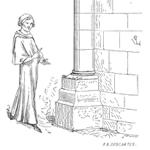
A certain Operations Manager started inventing production KPIs in order to measure reliability from a production perspective. So he got together his colleagues and they came up with this formula.
Reliability = Good Production / (Net Production Hours + Nominal Speed)
When asked to define ‘good production’, I was told that it was the saleable production remaining after losses such as speed losses, first time quality, downtime, change overs, etc. were taken off.
After 3 years of running TPM (Total Productive Maintenance) across 3 factories, they made the following observations. The mean time between failure (MTBF) of equipment in all 3 factories increased. The production volumes increased. However the Reliability remained flat. How can this be? Something is not right. Is the above formula incorrect?
Is there a better way to calculate Reliability from a production perspective?
Dear Byron,
They should not be calling the result from that equation ‘Reliability’ because it is not reliability they are measuring. Reliability is a measure of the probability of a successful outcome and the equation is totally wrong for calculating probability. It looks much more like a plant uptime measure, though it is the wrong equation for that as well. At best you could call it a Plant Productivity measure, but as you know, the equation gives unexplainable results. It is dangerous inventing production KPIs because it is so easy to get the equation wrong.
The equation they used does not make sense to me either, because it contains mixed units of measure. Hours and speed cannot mathematically be added together. Saleable throughput divided by hours + speed is not correct mathematics. You will get a number, but it is based on non-sense math and so the answer is meaningless.
It beats my why they didn’t just use OEE (Overall Equipment Effectiveness) as their production performance measure. That is a perfectly good way to measure what this company is trying to do. Plus OEE is universally understood and can be used to bench mark with other companies in their industry.
Their equation is not equivalent to OEE. The equation for OEE is as noted below.
OEE = Availability x Throughput rate x Quality rate
Availability = Running Time / Net Operating Time
Throughput rate = Actual Output / Target Output
Quality rate = Saleable Output / Actual Output
Calculation of Overall Equipment Effectiveness, as used in TPM (Total Productive Maintenance) is the product of Equipment Availability, Quality performance (non-scrap or reworked product) and Speed (throughput). Retired Reliability Engineering Professor David Sherwin advises, it is not really a complete analysis. It does not take account of equipment costs and profits, and so it is not a good measure for comparing machines or production lines, or for comparing the effect of equipment deterioration over time. Unless you also look at the whole economics of a situation you do not really know if the way of running the business is the best financial return on investment (ROI). OEE is only a part of the Life Cycle Risk Cost and Profit perspective. Within those inherent limitations the OEE concept is useful for monitoring equipment effectiveness and performance.
When you think about the behavior of the non-sense math equation, where the value for ‘Production Reliability’ remained flat across three years, it is what I would expect from the use of that formula. As ‘Net Production Hours’ go up, so does ‘Good Production’, probably by around the same proportion for each one. Thus the denominator and numerator both increase at the same time by about the same ratio and the equation delivers the same value for ‘Production Reliability’ regardless of real production behavior.
Though the production performance formula seems to be non-sense math’s, you can still check if its result will always give you a flat ‘production reliability’ curve. You test the formula’s behavior by using the improving production results from across the years and watching the effect of the proportionate change of each variable on the result from the equation. As the ‘Net Production Hours’ and ‘Good Production’ values change you can to observe how the resultant ‘production reliability’ value changes. You can check if my impression is right, and a flat result is normal from the formula, by calculating the proportionate change in ‘Net Production Hours’ and ‘Good Production’ over the years and seeing if they are about the same. If so then the ‘production reliability’ curve will be flat.
You should now take samples of their historic data over the past three years and use them with the approved OEE equation, then plot the OEE equation results against the results from using the non-sense equation on the same data. That will once and for all indicate which equation reflects the operation’s performance correctly and which does not.
When you are tempted to invent your own formulas for production performance measurement you need to develop mathematically correct equations that truly represent the performance you want to measure.
I hope the above is useful in addressing your problem with developing proper formulas for production performance measurement.
All the best to you,
Mike Sondalini
Leave a Reply